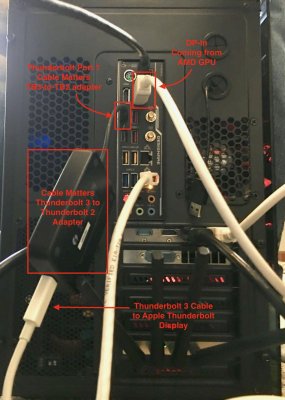CaseySJ
Moderator
- Joined
- Nov 11, 2018
- Messages
- 22,197
- Motherboard
- Asus ProArt Z690-Creator
- CPU
- i7-12700K
- Graphics
- RX 6800 XT
- Mac
- Classic Mac
- Mobile Phone
Technically there is a software-only method for flashing the Thunderbolt firmware, and it works through macOS itself. But the method is extremely time-critical. It gives us a 20-second window of opportunity immediately after boot, during which the firmware can be flashed. But because the Winbond W25Q80DV is a page-programmed chip, and a page is 4K bytes, even though we modify only about 6 bytes in a single page we nevertheless need to reprogram the whole page. Sometimes this can finish within 20 seconds, but most of the time it cannot. If the 20-second window expires before the full page has been programmed, it will leave the firmware in a corrupted state. It will then be necessary to use an external flasher such as the Raspberry Pi. So the software method is like playing Russian roulette. And that is why Elias and I decided not to publish any information about the software procedure.@CaseySJ Is using a Pi with a clip the best way to flash onboard Z390 Designare Thunderbolt 3 firmware, or is it possible to use a software tool to modify firmware of the Titan Ridge?
Using the Raspberry Pi is the best way to flash the on-board Titan Ridge firmware chip. The Pi can be used for other tasks, so it's not a wasted one-time purchase.

